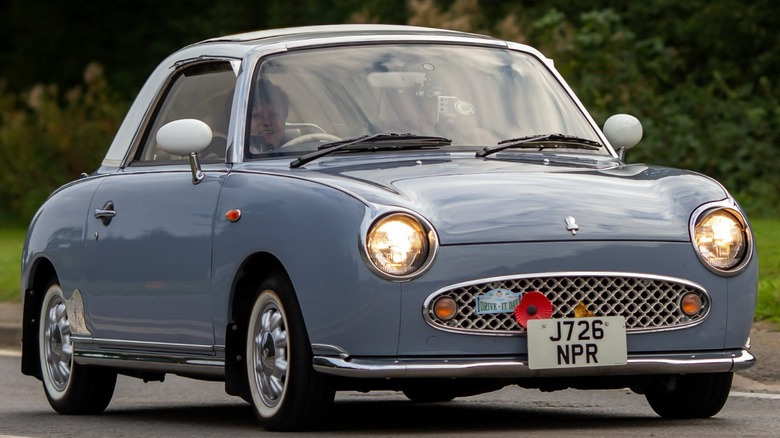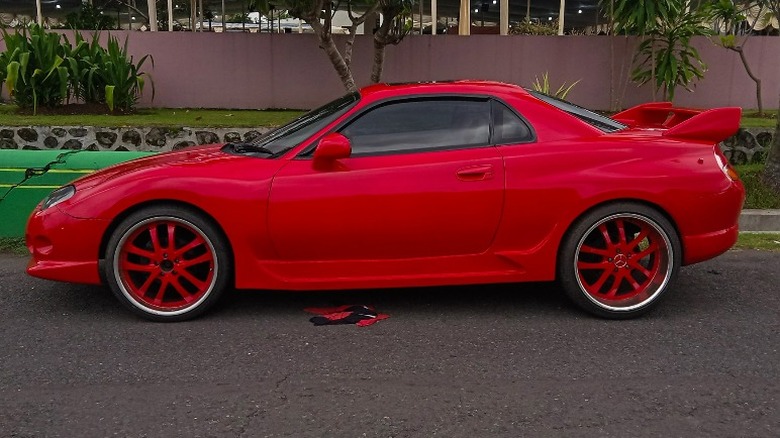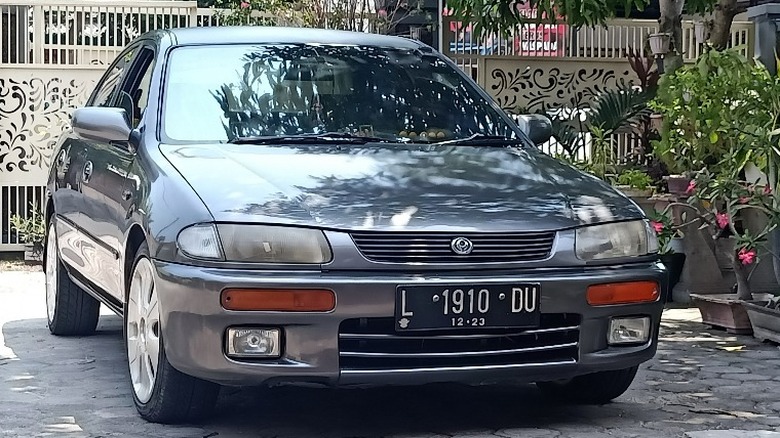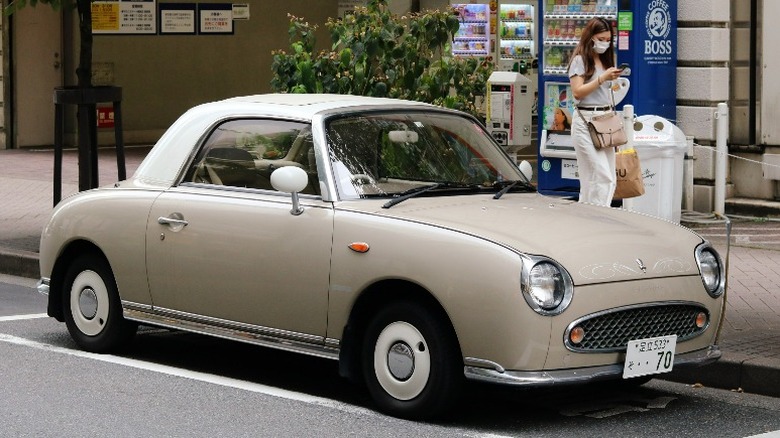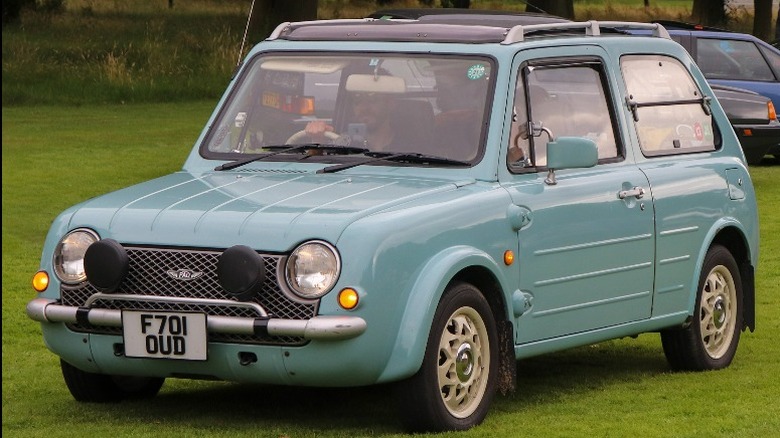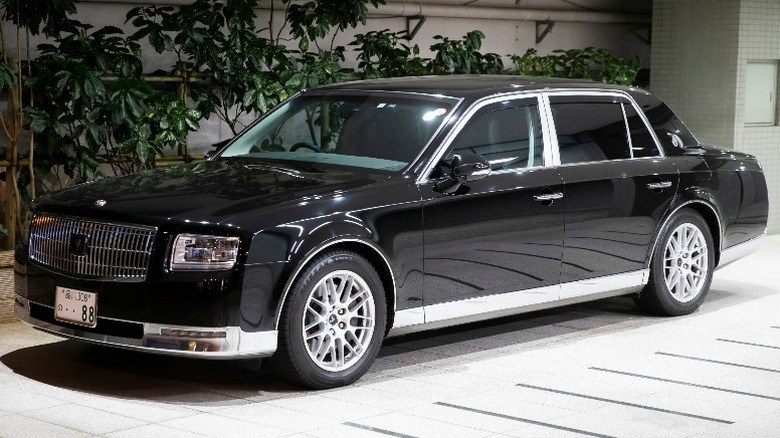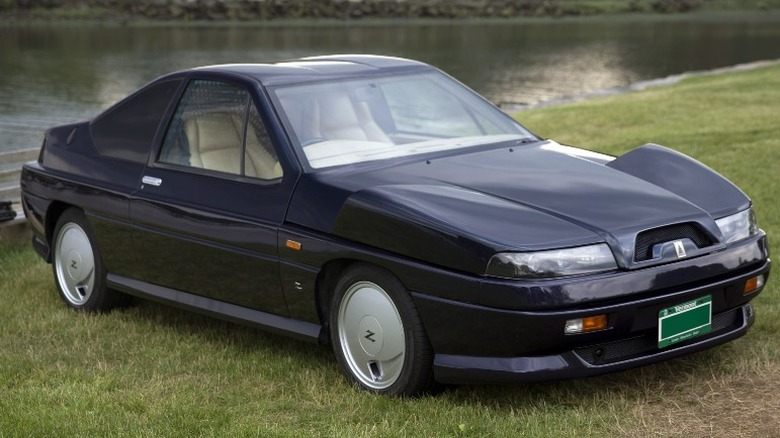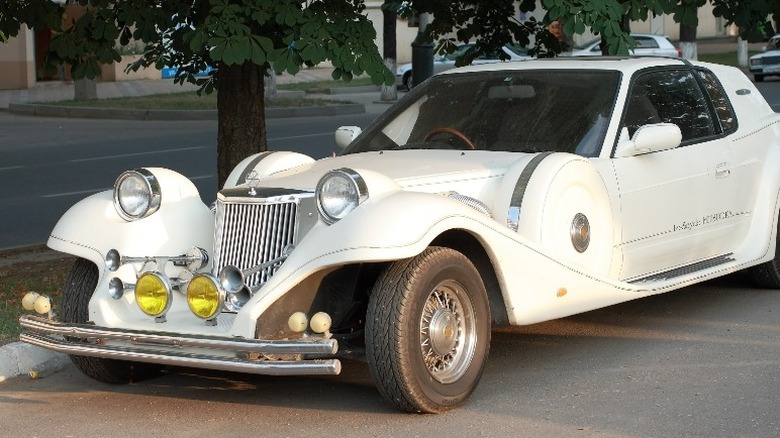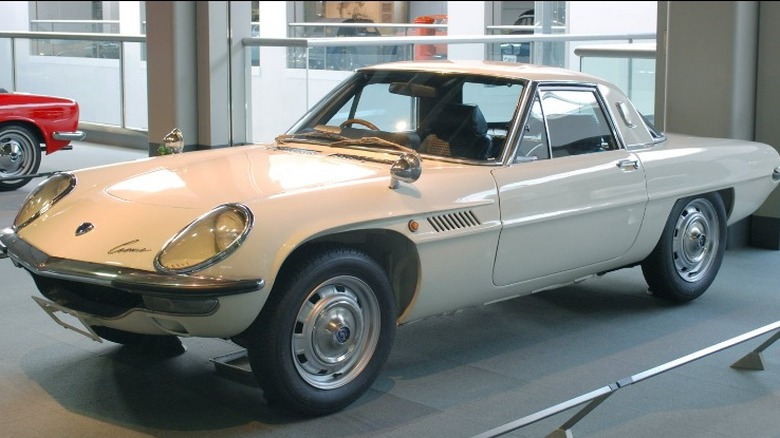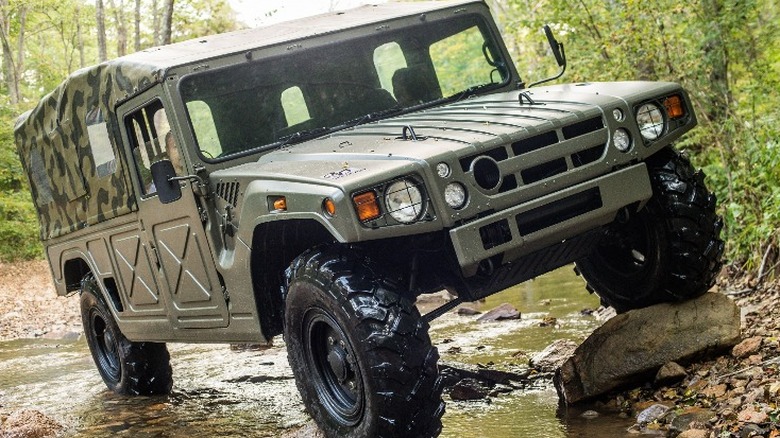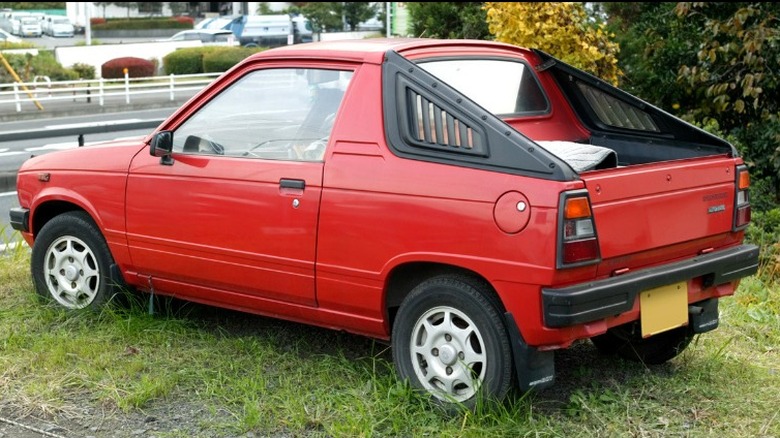The 10 Rarest JDM Cars Of All Time
Japanese cars built for export worldwide are known for their quality, efficiency, and reliability, as are the cars sold exclusively in the Japanese market. While JDM cars appeal to enthusiasts for their promise of style and performance, their exclusivity also makes them attractive. Many JDM cars, such as the Mitsubishi Lancer Evo VI and the Nissan Silvia S15, were never officially exported to the U.S., making them difficult to find and therefore more alluring.
What is a JDM car?
A JDM (Japanese Domestic Market) vehicle is originally manufactured solely for the Japanese automobile market, with no plan for export. While many JDM vehicles are performance cars or high-powered luxury vehicles, some are just quirky such as the Kei cars. The city cars (also known as ultraminis or microcars) are the smallest highway-legal passenger vehicles in Japan, with limited engine capacity and dimensions.
Today, the U.S. allows the import of JDM cars providing they meet specific requirements. The vehicle must be at least 25 years old, meaning it no longer must comply with EPA and FMVSS regulations.
Most car enthusiasts are familiar with the JDM sports cars such as the JDM Skyline GTR, Toyota Supra JZA80, and Honda NSX. However, the rarest JDM cars are those that never became instant classics due to several possible factors: Ineffective marketing, unfortunate timing, market satiation, or failure to meet overseas safety and environmental requirements at the time.
Here are some of the rarest JDM cars of all time.
Mitsubishi FTO
Mitsubishi Motors was once a well-known and respected brand in the U.S., offering the Galant, a significant competitor for the Honda Accord, the Eclipse, a popular choice among high-school students, and the 3000GT, a viable alternative to a Ferrari for enthusiasts without an exotic Italian exotic sports car budget.
One Mitsubishi product, the FTO, ranks among the best made, winning the highly coveted "Car of the Year" award in Japan in its debut year. However, even the most enthusiastic gearhead may have never known of its existence. Mitsubishi produced the FTO sport compact in Japan from 1994 to 2000. Although the JDM car made it to some non-Japanese markets (UK, Australia, and New Zealand) initially via the grey market, it never made it to the U.S.
Mitsubishi launched the front-wheel-drive FTO sports coupe with a naturally aspirated 1.8-liter in-line four that generates 123 horsepower at 6000 rpm and 125 lb-ft of torque at 6000 rpm. The Mitsubishi's power compared well with Mazda's MX-5 Miata fitted with a 1.8-liter producing 128 horsepower.
The FTO with a Sports package boasted an upgraded engine, a 2.0-liter V6 delivering 168 hp. In 1994 and 1995 Mitsubishi also released a special-edition GPX trim level equipped with the same powerplant but fitted with the Mitsubishi Innovative Valve Timing Electronic Control system (MICEV), generating an impressive 197 horsepower. The automaker produced only 207 FTO GPX units, and now, after 25 years have lapsed, Americans can purchase one legally (if they want a right-hand drive car).
Mazda Lantis
In 2021, Mazda conducted the "Legendary Mazda's favorite voting" campaign to commemorate the automaker's 100th anniversary, commissioning a survey to determine the most popular Mazda car. Surprisingly, the Mazda Miata did not place first. Instead, the Lantis took the honors with over a million votes, making it the most legendary Mazda in the brand's history.
However, few people in the U.S. have heard of the sport compact since none made it to U.S. dealerships during the production years of 1993 to 1998. Mazda offered the Lantis in Japan and Europe under various names. The car came in two body styles: a sedan and a five-door hatchback, each with three engine options. A 1.5-liter four-cylinder engine generating 87 horsepower powered the base models, while upgraded trims offered a 1.6-liter and 1.8-liter four-cylinder engine producing 88 horsepower and 115 horsepower, respectively. All the powerplants sent power to the front wheels via a five-speed manual or four-speed automatic transmission.
While the standard trim Lantis models offered respectable performance, the JDM-only Type-R variant is perhaps the most unique model. The sporty compact housed a potent KF-ZE 2.0-liter DOHC V6 engine generating 170 horsepower. The Type-R featured aerodynamic mods and a limited-slip differential to deliver sporty handling and enhanced grip through the turns. The Lantis Type-R's superior power and exceptional road-handling performance earned the car a place in the 1994 Castrol Japan Touring Car Championship. The highly respected vehicle even shows up in most of the Sony Playstation Gran Turismo racing games.
Nissan Figaro
The retro appearance of the Figaro makes it look like a car designed and built in the 1960s, but Nissan produced the Japanese Kei car in 1991. The automaker manufactured 20,073 convertible Figaros for only one year, all with right-hand drive, and sold them exclusively in the Japanese market.
Nissan launched the Figaro in 1989 at the Tokyo Motor Show, with the slogan, "Back to the Future," although the quirky-looking car bears no resemblance to the DeLorean time machine used in the film. The two-seater, fixed-profile convertible measuring only 147 inches long is based on the Nissan Micra chassis. The subcompact car features a smooth body, a bubble-style rear end, an oval grille, round headlamps, and abundant chrome elements.
Perhaps the most unique feature of the Figaro is the foldable top. The central part of the roof folds under the deck lid that looks like a trunk, while the B-pillars and sections above the side windows remain in place. While the two-seater, fixed-profile convertible has a retro exterior, the interior is also vintage, but with modern features. The Figaro came standard with air conditioning, leather upholstery, and a CD player.
Under the hood, Nissan installed a 987cc MA10ET I4 Turbo engine that produces 76 horsepower and 78 lb-ft of torque. The lightweight vehicle with a curb weight of only 810 kg accelerates to 62 mph in 11.1 seconds, reaches a maximum speed of 106 mph, and achieves 38.7 mpg on average.
Nissan Pao
In the late 1980s and early 1990s, Nissan made several retro-styled JDM vehicles, often referred to as the "Pike cars, " after the Nissan Pike factory where they were built. The group included the Figaro, Be-1, S-Cargo, and the Pao, a three-door hatchback produced from 1989 to 1991. Initially marketed without the Nissan branding, the Pao had several old-school features such as round headlights, an optional textile sunroof, external door hinges, and a modern tape deck stereo system disguised as a vintage radio.
A water-cooled 1-liter inline four-cylinder engine producing 52 hp at 3000 rpm and a torque of 75 lb-ft at 3600 rpm powers the vintage-styled JDM car. A five-speed manual or three-speed automatic transmission sends power to the front wheels.
The fun little car has been described by some observers as "adorable," and with most cars of similar description, the performance is not the automaker's priority. The Nissan Pao accelerates from 0 to 60 mph in lackluster 18.5 seconds and reaches a top speed of 87 mph. Perhaps the best feature of a small car (curb weight of 720 kg) with so little power is the fuel economy. While some estimates range from 44 mpg to 79 mpg, real-world driving tests conducted by Jalopnik showed a lower, but still impressive, 34 to 36 mpg.
Nisson made over 30,000 Paos during its brief three-year production run giving potential buyers plenty of options. Carsfromjapan.com quotes the price of a Nissan Pao ranges from $4,000 to $13,000.
Toyota Century
In 1967, Toyota introduced a new full-size luxury sedan, the Century, to celebrate the 100th birthday of Toyota Industries' founder Sakichi Toyoda. Although it became Toyota's flagship limousine with luxury, comfort, and performance features on par with Rolls-Royce and Maybach, the car has never been offered anywhere outside of Japan and remains relatively unknown.
For over 50 years, the Century has represented the epitome of Japanese engineering excellence and culture, becoming the vehicle of choice for the country's most successful businessmen, high-ranking government officials, and even members of the royal family. The first generation from 1967 to 1997 saw only cosmetic changes to the car's appearance but offered three distinct engines: A 3.0-liter V8 (1967 to 1973), a 3.4-liter V8 (1973 to 1982), and a 4.0-liter V8 (1982 to 1997).
In 1997, Toyota made a major change to the powerplant, equipping the Century with the automaker's only series-production V12, a 5.0-liter 1GZ-FE conservatively rated at 276 horsepower. To please the Century's illustrious clientele, Toyota gave its engineers the task of building a smooth-running and efficient vehicle with an unprecedented level of reliability. Acceleration and speed were not priorities. Doug DeMuro says in a YouTube video that, "Toyota undoubtedly chose this engine (V12) for its smoothness."
The second-generation Century sold for 21 years before the automaker introduced the third-generation model. The new car features a 5-liter hybrid-electric powertrain and modern safety technology, but with the same emphasis on smoothness and rider comfort.
Nissan Autech Zagato Stelvio AZ1
The Autech Zagato Stelvio AZ1 represents a rare 1980s collaboration between Japanese and Italian automobile designers and manufacturers. In 1989, Autech, Nissan Motors' official tuning subsidiary, partnered with the distinguished Italian design house Zagato to produce a series of luxury sports cars. Although Nissan planned to make 203 Stelvio AZ1 units, the automaker produced just over 100 vehicles, and it was the only car the partnership ever produced.
While Zagato-designed cars are unique, perhaps borderline bizarre, many have been successful. The Alfa Romeo SZ, Aston Martin Volante, and Maserati Biturbo Spider are examples. Even Elio Zagato admitted, "When you see a car and it is a little different from all the other cars, a little strange, then it is a Zagato." The Stelvio AZ1 was no exception.
The two-door coupé's proportions seem slightly out of balance with its Zagato signature double-bubble roof and minuscule grille resembling a downturned frowning face bordered by simple, horizontal headlights. But the unmistakable humps on the front quarter panels that fly upwards like gullwing doors housing the side-view mirrors give the car its most distinguishing feature.
Based on the Nissan Leopard, Autech fitted the Stelvio AZ1 with an enhanced Nissan VG30DET 3-liter V6 featuring double overhead cams, 24 valves, and T3 four-bolt Garrett turbocharger producing a claimed 280 bhp. A four-speed ZF transmission sends power to the rear wheels, and the coupé rides on a fully independent front and rear suspension, with disc brakes on all four wheels.
Mitsuoka Le-Seyde
At first glance, the casual observer might claim the 1979 Mitsuoka Le-Seyde is a Phaeton Excalibur, the classic kit car styled after the 1928 Mercedes-Benz SSK by Brooks Stevens for Studebaker, or a 1978 Zimmer Golden Spirit. However, Mitsuoka built the limited-edition Le-Seyde on top of a Nissan Silvia S13 for the Japanese market, and the automaker claims it sold all 500 units produced within four days after they went on sale. Mitsuoka also produced the Dore, a convertible version of the hardtop Le-Seyde, built on a Ford Mustang Fox-body using the Mustang's 302-cubic inch (4.9-liter) V8 engine.
Nissan sold its S-chassis cars with various engine options worldwide but only with the naturally aspirated 1.8-liter DOHC inline-4 CA18DE engine in the 240SX. Le-Seyde models equipped with the same engine produced 131 horsepower and 117 lb-ft of torque sending power to the rear wheels via a four-speed automatic transmission.
The production version Nissan Silvia S13 with its excellent handling characteristics was well-known (in Japan) for its masterful drifting capabilities. These characteristics would be carried over to the Le-Seyde were it not for differences in the vehicle's dimensions (longer body), weight (heavier), and aerodynamic properties. While low-mileage Nissan S-chassis JDM imports can fetch resale prices in the low six figures, the rare Mitsuoka Le-Seyde or Dore with its long wheelbase and lack of power can be found for under $20,000.
Mazda Eunos Cosmo
While the Mazda's RX-7 made the revolutionary rotary engine a household name, the Mazda Eunos Cosmo remained in the shadows, even though it was the world's first production model powered by a rotary engine. Produced in the early '90s, Mazda equipped the 2+2 coupé with either the newly developed 13B-RE twin-turbo dual rotary engine or a never-seen-before 3-rotor 20B-REW engine producing nearly 300 horsepower. The Eunos Cosmo demonstrated exception acceleration for its time, reaching 100 km/hr in 6 seconds.
The Eunos Cosmo focused on more than just innovative engine technology, power, and performance. The luxury flagship of Japan provided a comfortable interior with the latest technology. It was the world's first vehicle equipped with a GPS navigation system. Other features included a CD player, a color touch screen for the climate control, and an optional mobile phone.
Mazda offered the Eunos Cosmo in two trim levels, the Type E for Elegance and the Type S for Sports. The S version came with a sportier suspension setting and the interior featured a dark cloth trim, while the Type E boasted a leather interior. The CCS (Car Controlled System) version included all the optional electronic upgrades. In 1991, Mazda also introduced the Type SX fitted with the Type S suspension, leather seats with suede inserts, and 16-inch BBS wheels. Mazda sold 8,875 Eunos Cosmo cars between 1990 and 1996 with nearly 40% powered by the 20B engine.
Toyota Mega Cruiser
In the 1990s, when many major Japanese automakers pursued the lucrative military market, Toyota developed the Humvee look-alike BXD10 to attract the Japan Self-Defense Forces. The success of the military version spawned a JDM civilian SUV, the BXD20, also known as the Mega Cruiser.
Produced from 1995 to 2002, Toyota sold most of the boxy JDM SUVs to police and fire departments in Japan, but a few civilians looking for off-road capabilities also purchased them. A 4.1-liter turbodiesel inline-four generating 153 horsepower and 282 lb-ft of torque sends power to all four wheels via a four-speed automatic transmission and a 4WD system featuring three locking differentials. Toyota designed the powertrain to deliver most of the torque at low rpm to prevent the engine from overworking off-road when trying to maintain speed and momentum on rough terrain.
The Mega Cruiser accelerates to 62 mph in 15.3 seconds and reaches a maximum speed of 81 mph. The SUV is unlikely to win any street races but off-road it could dominate competition. The large SUV with 6 seats offers 91.8 cubic feet of luggage space and a maximum payload capacity of 2,051 lbs.
Even with a curb weight of 6,393 pounds, the heavy vehicle achieves 25.3 mpg on average and the 28.5-gallon capacity fuel tank means it can travel over 720 miles before requiring a refill. The civilian Mega Cruiser sells in the six-figure range in the U.S., but a stripped-down military model sells in the $30,000 to $40,000 range.
Suzuki Mighty Boy
To classify the Suzuki Mighty Boy as a utility vehicle is a misnomer. While it has a cargo bed, the space measures about two feet, making it just large enough to haul two shovel-fulls of dirt or a small toolbox. The JDM Kei car introduced in the 1980s is the "pickup" version of the Suzuki Cervo.
Produced from 1983 to 1988, most U.S. car buyers have never heard of the coupé utility because it was only available in Japan, Australia, and Cyprus. Suzuki built the Mighty Boy to meet Japan's Kei-car classification requirements, which at the time included a maximum displacement of 550 cc. The naturally aspirated, single overhead camshaft 0.5-liter inline 3-cylinder engine produces 30.6 bhp at 6000 rpm, and maximum torque of 31.7 lb·ft at 3500 rpm. The engine sends power to the front wheels via a five-speed manual transmission.
"Small but mighty," the Suzuki Mighty Boy weighs 530 kg at the curb, offers a maximum payload of 970 pounds, and some owners claim it can reach a top speed of 75 mph. The Suzuki featured a MacPherson strut suspension and front disc brakes, but the short wheelbase and stiff rear leaf springs combined with uncomfortable seats provided a punishing ride.
The conventionally styled Kei-class pickup wasn't a runaway sales success. Less than 3,000 units were exported and an estimated 300 to 400 units remain today. Resale units can be found for under $10,000.
